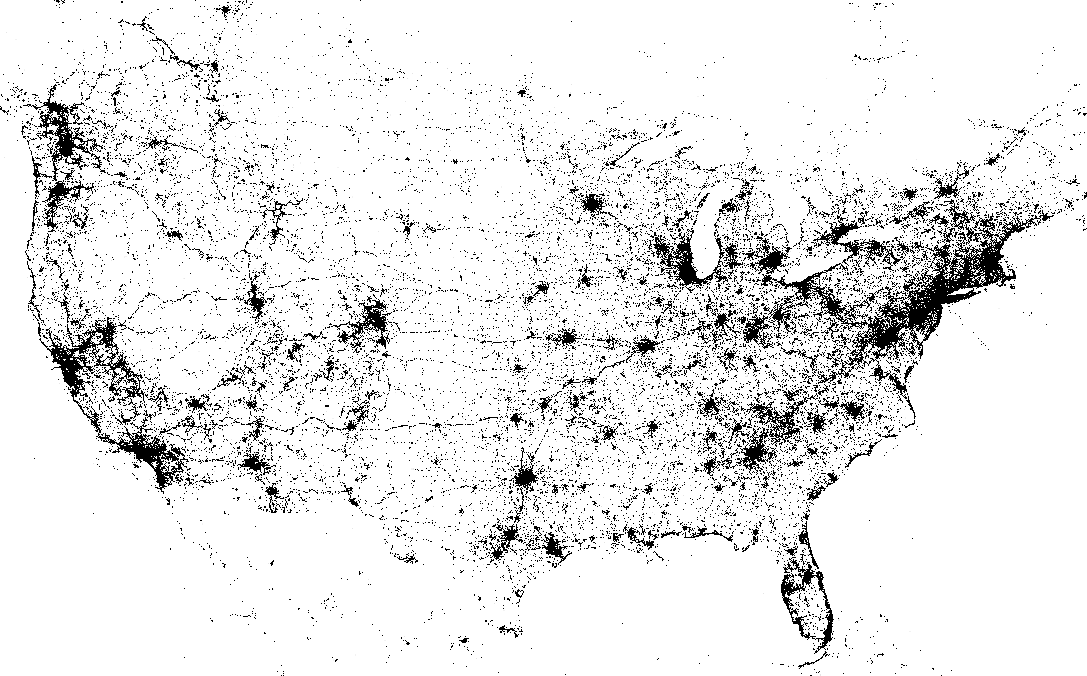Updated to include a comment from ASNE President Pam Fine and the percentage change in total jobs for those organizations that completed the survey this year and last.
After a decade of documenting job losses for journalists totaling more than 20,000 since 2006, the American Society of News Editors has abandoned the effort.
The annual ASNE census (renamed the ASNE Diversity Survey) was released today on the eve of the group’s yearly convention. For the first time in its nearly 40-year history, the survey included no estimate of the total of full-time professional jobs in the newsrooms of newspaper organizations.
A press release explained the decision by saying “the structure of modern newsrooms makes it impractical and error-prone to try to estimate” a total.
More specifically, job definitions have changed and many chains have farmed out copy-editing and design work from individual papers to off-site centers. ASNE’s efforts to measure total employment and minority participation at these hubs have proven unsuccessful.
Also the census has long relied on a imprecise model projecting results from those organizations that do voluntarily report to the entire industry. The number of year-to-year losses — 3,800 for 2014, for instance — in practice could be heavily influenced by methodology.
The change returns the survey to its original (and continuing) purpose of tracking the percentage of minorities in newsrooms, hoping to motivate newspaper organizations to improve diversity.
Here the news for 2015 was good. Of organizations responding to the survey (now including a number of digital only news sites) minorities held roughly 17 percent of the editorial jobs.
That is a sharp uptick from the 12.8 percent measured for 2014. As total employment shrunk over the decade, the minority percentage had stayed roughly steady — that is white and minority journalists were equally affected by the cuts.
The gain may reflect growing participation by digital organizations (double as many this year than last) and a concurrent shift of resources from print to digital news operations at many legacy newspapers. Asian-Americans are a significant presence in both.
Adam Maksl, an academic at Indiana University Southeast who administers the survey, told me that he was confident there are real gains for minorities here, not just a methodological blip.
Comparing results from 433 organizations that reported this year and last, Maksl said, he observed actual increases in minority employment, not just percentage gains. That was especially true, he said, at the eight largest organizations with circulation above 500,000.
“Both recruitment and retention appear to be up.”
Whether the ASNE also wanted out of providing bad-news statistics, which have been widely reported as a prime measure of industry decline, is in the eye of the beholder.
The Newspaper Association of America (rechristened the News Media Alliance this week) stopped reporting ad revenue numbers several years ago. Then-director Caroline Little was candid in saying part of the reason was to stop “beating ourselves up.”
I asked ASNE president Pam Fine whether P.R. considerations factored in the change. She replied by e-mail:
We avoided trying to make any overall workforce projections this year because there seems to be no uniformity in newsroom size anymore. It used to be that we thought we could make some educated guestimate, but as the business has changed, we felt we had no supportable basis on which to do that. So we decided to report (only) what we could find out from actual survey participants. It would come as no surprise to anyone, I’m sure, that the number of employees in newspapers and other places has been declining. I do hope other organizations with more time and money can provide comprehensive workforce numbers. We just don’t have the wherewithal to keep chasing that.We worked incredibly hard to get more respondents this year including doubling the number of digital-only sites so we could do as good a job as possible on reporting on the minority workforce.
To my eye, ASNE could have provided at least a percentage change estimate on total jobs at the 433 organizations reporting both years — had it chosen to. Fine and Maksl agreed, after the original version of this post was published, and calculated the number.
At the reporting organizations total employment was down 6.6 percent year-to-year. That reflected an increase of 5.6 percent in minority employees and an 8.9 percent decrease in whites. The 2014 results showed a 10.8 percent one year fall in total professional newsroom jobs.
Besides dropping the estimated total, this year’s survey is phasing out reports by job category. And in contrast to previous years, ASNE did not release percentage minority figures for individual participating organizations.
The survey did suggest women are gaining both in overall percentage of newsroom jobs and representation in executive ranks (both possibly influenced by the growing role of digital newsrooms).
Having written about the newsroom census totals for 15 years, I’m not a disinterested party. The figure did provide an essential benchmark on what was happening to newsroom capacity — with huge declines during the worst three years of the recession and continuing losses since.
We are left with reports from the Bureau of Labor Statistics, headcounts publicly traded companies disclose as they report results and news of layoffs paper by paper.
Eliminating the industry estimate takes away an important tool for assessing crucial questions such as whether the rise of big digital-only sites and local non-profit and for-profit startups is taking up the slack from downsized newspaper operations.
Still, I have some sympathy with ASNE’s decision. Over time, the annual totals took on an engraved-in-stone quality as they were re-reported in the Pew Research State of the News Media studies and other outlets.
As Maksl put it in our conversation, those numbers “were always just an approximation.”
Correction: The original version of this post said that ASNE President Pam Fine would not comment on whether PR considerations factored into the change. She had not been asked that directly and provided the answer quoted in this revised version. We regret the error.







